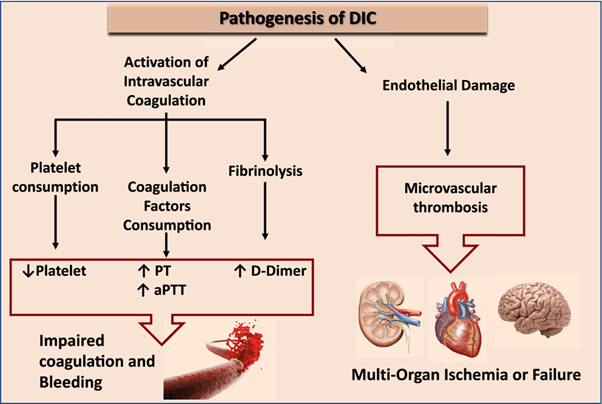A 78-kg patient with septic shock has a urine output of 30 mL/hr for the past 3 hours. The pulse rate is 120/minute and the central venous pressure and pulmonary artery wed pressure are low. Which order by the health care provider will the nurse question?
Administer hydrocortisone (Solu-Cortef) 100 mg IV.
Give PRN furosemide (Lasix) 40 mg IV.
Increase normal saline infusion to 250 mL/hr.
Titrate norepinephrine (Levophed) to keep systolic BP >90 mm Hg.
The Correct Answer is C
In septic shock, one of the key goals of management is to restore and maintain adequate intravascular volume. However, in this case, the patient's urine output is low (30 mL/hr for the past 3 hours), suggesting inadequate renal perfusion and potential fluid overload.
Administering additional normal saline at an increased rate (250 mL/hr) without addressing the low urine output could potentially exacerbate fluid overload and further compromise the patient's condition.
A. Administer hydrocortisone (Solu-Cortef) 100 mg IV in (option A) is incorrect because: Hydrocortisone is commonly used in septic shock to help stabilize blood pressure and modulate the inflammatory response.
B. Giving PRN furosemide (Lasix) 40 mg IV in (option B) is incorrect because Furosemide, a loop diuretic, can be administered as needed to address fluid overload or to increase urine output if there is evidence of volume overload.
D. Titrate norepinephrine (Levophed) to keep systolic BP >90 mm Hg in (option D) is incorrect because: Norepinephrine is a vasopressor commonly used in septic shock to increase systemic vascular resistance and maintain adequate blood pressure.
Nursing Test Bank
Naxlex Comprehensive Predictor Exams
Related Questions
Correct Answer is B
Explanation
Cool, clammy skin, tachycardia, and hypotension are signs of shock, indicating inadequate tissue perfusion and oxygenation. The immediate priority is to ensure adequate oxygen delivery to the tissues. Providing oxygen at 100% via a non-rebreather mask helps increase the patient's oxygen saturation and improve tissue oxygenation.
While all the options mentioned are important in the management of a patient in shock, oxygenation takes priority as it directly addresses compromised tissue perfusion and oxygenation.
A. Inserting two large-bore IV catheters in (option A) is incorrect because: Establishing intravenous access is crucial for fluid resuscitation and administration of medications, but it can be done after ensuring adequate oxygenation.
C. Drawing blood to type and crossmatch for transfusions in (option C) is incorrect because Blood typing and crossmatching are important for potential blood transfusions but should not be the first action in this critical situation.
D. Initiating continuous electrocardiogram (ECG) monitoring in (option D) is incorrect because Continuous ECG monitoring is important for assessing cardiac rhythm and detecting any dysrhythmias, but ensuring oxygenation should be the initial priority.
Therefore, in a patient presenting with cool, clammy skin, tachycardia, and hypotension, the nurse should first provide oxygen at 100% via a non-rebreather mask to address inadequate tissue perfusion and oxygenation.
Correct Answer is A
Explanation
Disseminated intravascular coagulation (DIC) is a condition characterized by both widespread activation of the coagulation system and excessive clotting, leading to the consumption of clotting factors and platelets. This results in a prothrombotic state, which can lead to organ dysfunction and bleeding manifestations.
Elevated D-dimer levels are a characteristic finding in DIC. D-dimer is a fibrin degradation product that is elevated when there is excessive fibrin formation and breakdown. Elevated D-dimer indicates ongoing fibrinolysis and activation of the clotting system.
B. Decreased prothrombin time in (option B) is incorrect because: DIC is characterized by consumption of clotting factors, which can result in prolongation of the prothrombin time (PT) as well as other coagulation tests.
C. Decreased partial thromboplastin time in (option C) is incorrect because Similar to the prothrombin time, the partial thromboplastin time (PTT) can also be prolonged in DIC due to the consumption of clotting factors.
D. Elevated fibrinogen level in (option D) is incorrect because, In DIC, there is consumption of fibrinogen along with other clotting factors. Therefore, elevated fibrinogen levels are not consistent with the pathophysiology of DIC.

Whether you are a student looking to ace your exams or a practicing nurse seeking to enhance your expertise , our nursing education contents will empower you with the confidence and competence to make a difference in the lives of patients and become a respected leader in the healthcare field.
Visit Naxlex, invest in your future and unlock endless possibilities with our unparalleled nursing education contents today
Report Wrong Answer on the Current Question
Do you disagree with the answer? If yes, what is your expected answer? Explain.
Kindly be descriptive with the issue you are facing.
